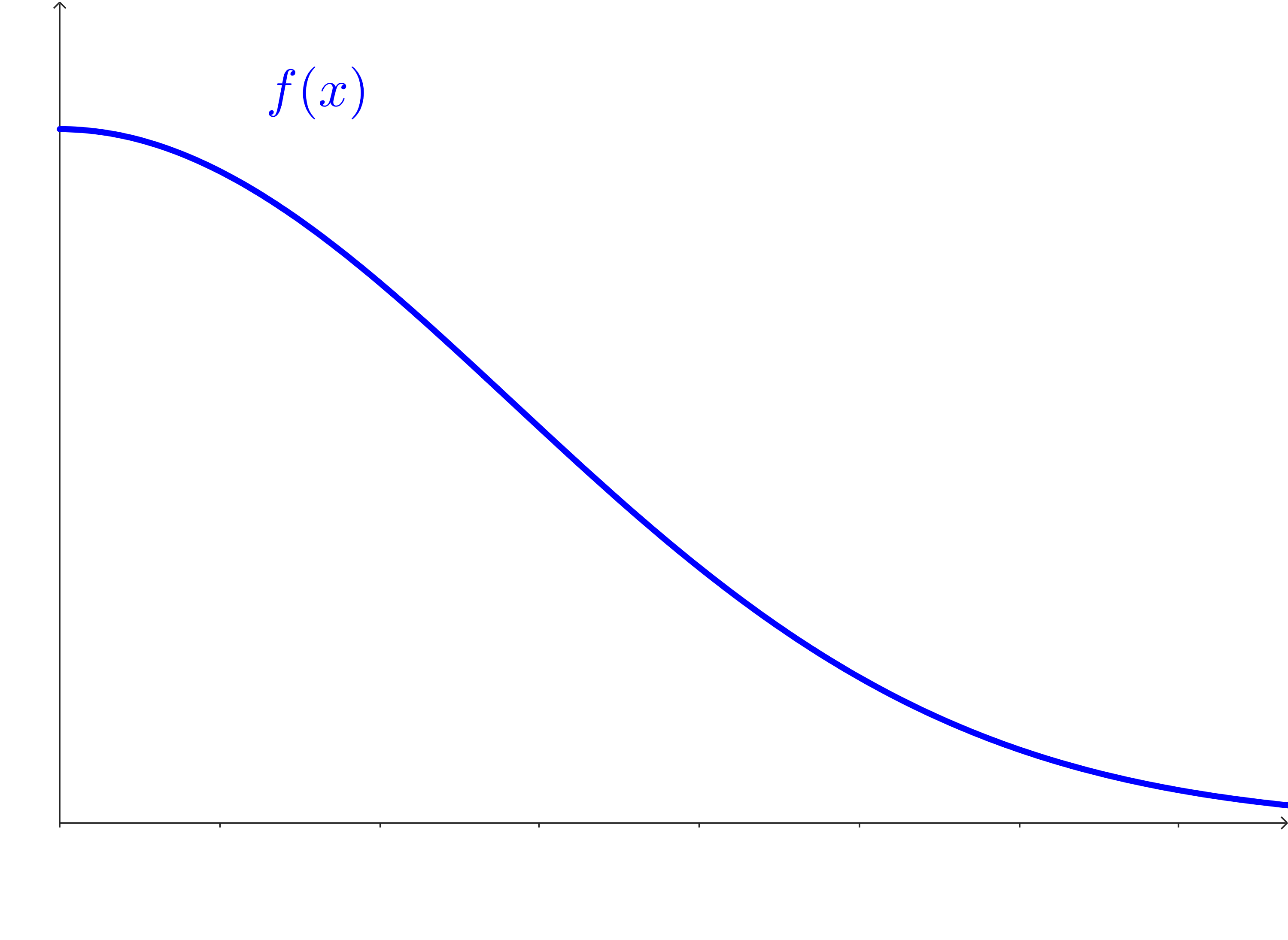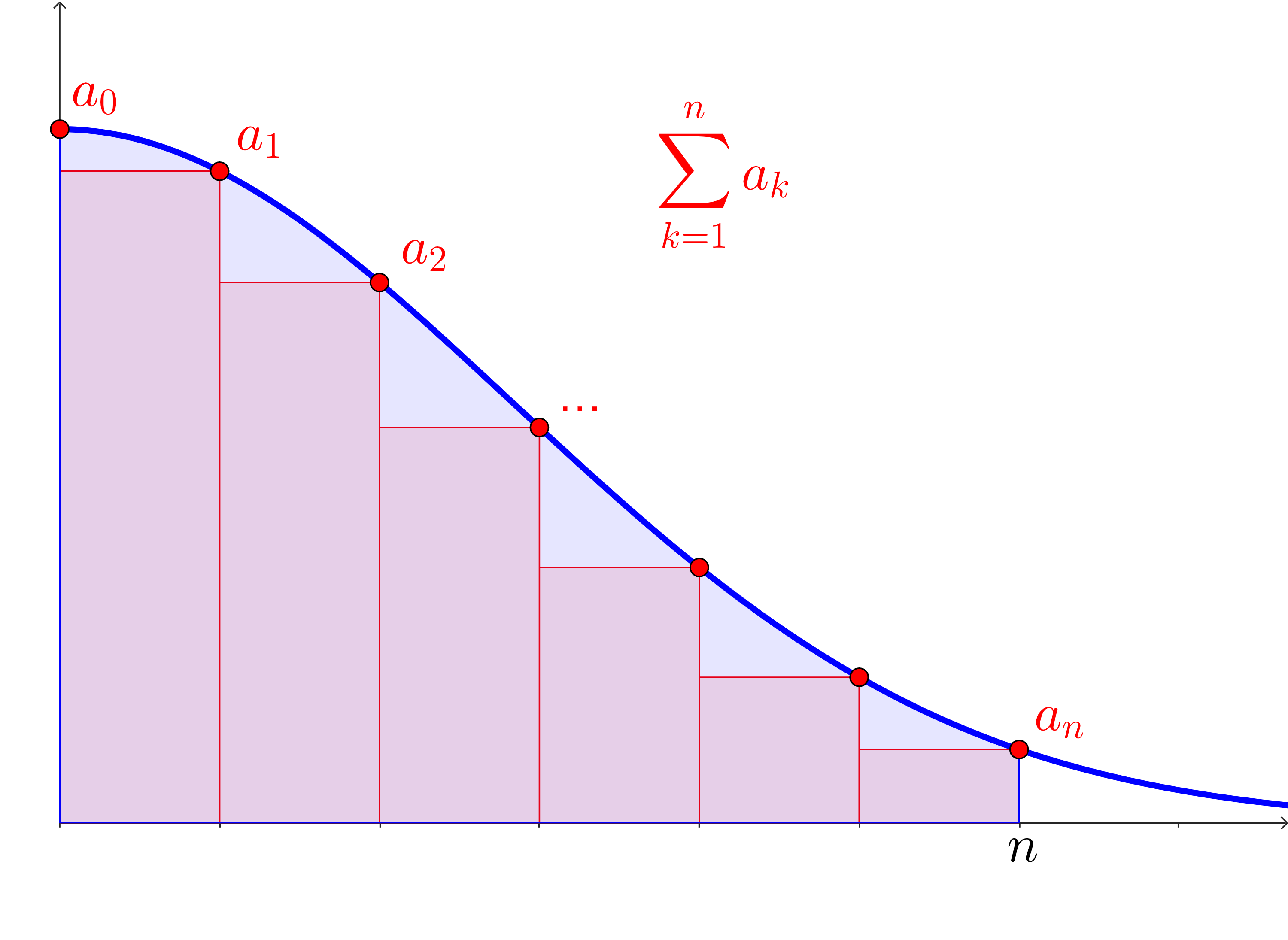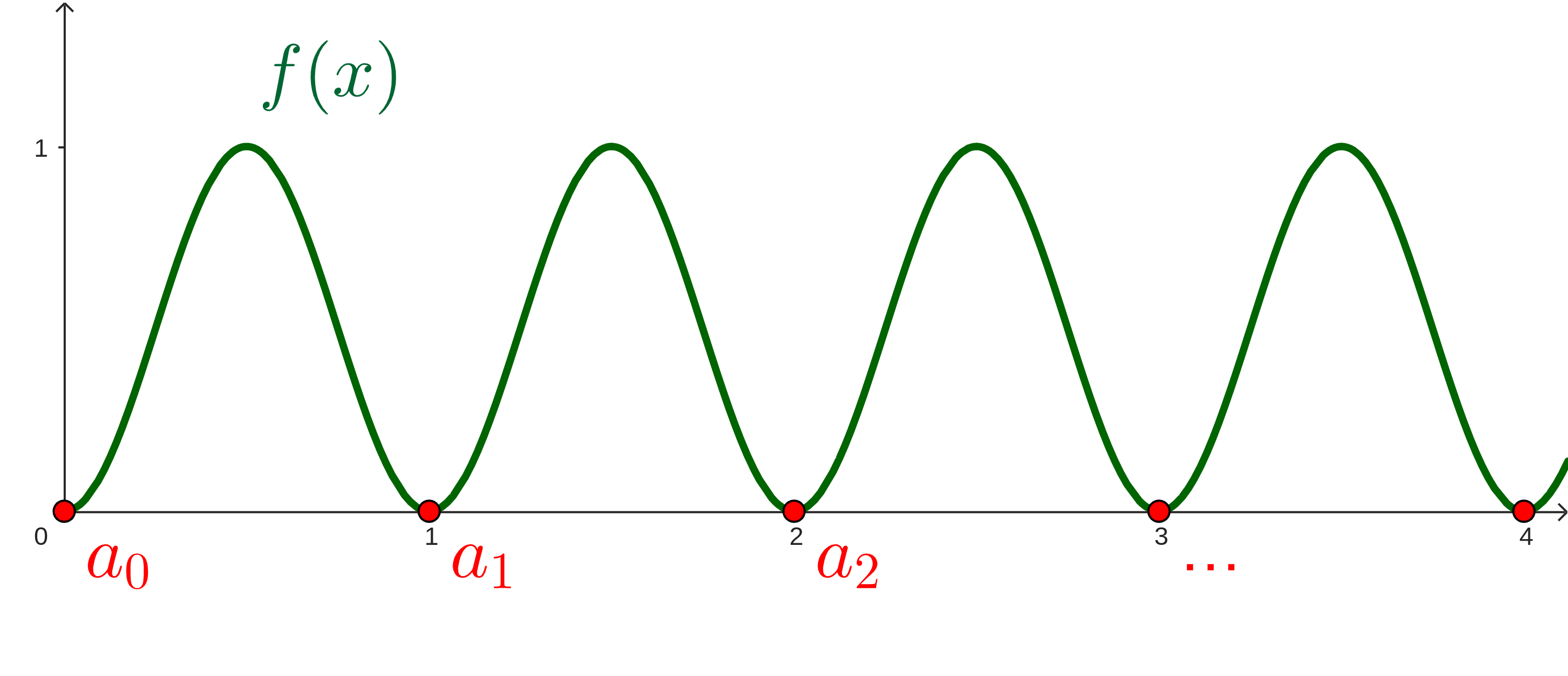Activity 8.4.1. Integrals and Infinite Series.
We’re going to work with a graph of a continuous function, and we’re going to start with a couple of conditions:
-
Our function will be continuous wherever it’s defined.
-
Our function will be decreasing on its domain.
-
All of the function outputs will be positive.
Let’s not worry about picking a specific function for this, but we will visualize a graph of one that meets these three requirements.


(a)
How does the partial sum, \(\displaystyle \sum_{k=0}^n a_k\) compare to the Riemann sum for \(f(x)\) from \(x=0\) to \(x=n\) with \(n\) rectangles?
(b)
We’re going to visualize the accumulation of \(f(x)\) from \(x=0\) to \(x=n\) by thinking about the integral:
\begin{equation*}
\int_{x=0}^{x=n} f(x)\;dx\text{.}
\end{equation*}

How does this area compare to the Riemann sum you thought of above? Compare them with an inequality and make sure you can explain why this has to be true.
Solution.
Since \(\displaystyle \sum_{k=0}^n a_k\) is a left Riemann sum for \(f(x)\text{,}\) and since \(f(x)\) is decreasing, then we know that each rectangle is formed from the highest point on each subinterval. That means that each rectangle’s area overestimates the area under the curve on that subinterval. Note, also, that since this is a left Riemann sum, the \(n\)th rectangle is hanging past the end of the definite integral. This means that:
\begin{equation*}
\sum_{k=0}^n a_k \gt \int_{x=0}^{x=n} f(x)\;dx\text{.}
\end{equation*}
(c)
Remove the first term of the series, \(a_0\text{,}\) and instead think of the sum \(\displaystyle \sum_{k=1}^n a_k\text{.}\) Can you still think of this as a Riemann sum to approximate the area from the integral \(\displaystyle \int_{x=0}^{x=n} f(x)\;dx\text{?}\)
How does this new Riemann sum compare to the area formed by the integral? Compare them with an inequality and make sure you can explain why this has to be true.
Hint.
Solution.
We can form a Right Riemann sum! Note that we don’t “overhang” the interval anymore.

Note, now, that we are using the lowest point on each subinterval to form the rectangle. This means that:
\begin{equation*}
\sum_{k=1}^n a_k \lt \int_{x=0}^{x=n} f(x)\;dx\text{.}
\end{equation*}
(d)
We have thought about two sums, and we can connect them:
\begin{equation*}
\sum_{k=0}^n a_k = a_0 + \sum_{k=1}^n a_k\text{.}
\end{equation*}
Use the sums to bound the integral:
\begin{equation*}
\fillinmath{XXXXXXXX} \lt \int_{x=0}^{x=n} f(x)\;dx \lt \fillinmath{XXXXXXXX}
\end{equation*}
(e)
Similarly, use the integral to bound the sum:
\begin{equation*}
\fillinmath{XXXXXXXX} \lt \sum_{k=0}^n a_k \lt \fillinmath{XXXXXXXX}
\end{equation*}
These bounds are going to be super useful! Discovering them is the main task for finding the connections between improper integrals and infinite series. These inequalities might seem kind of strange at first, but we’re going to apply a limit to everything as \(n\to \infty\text{,}\) and then think about our definitions of convergence (Definition 7.1.4 and Definition 8.2.2).


